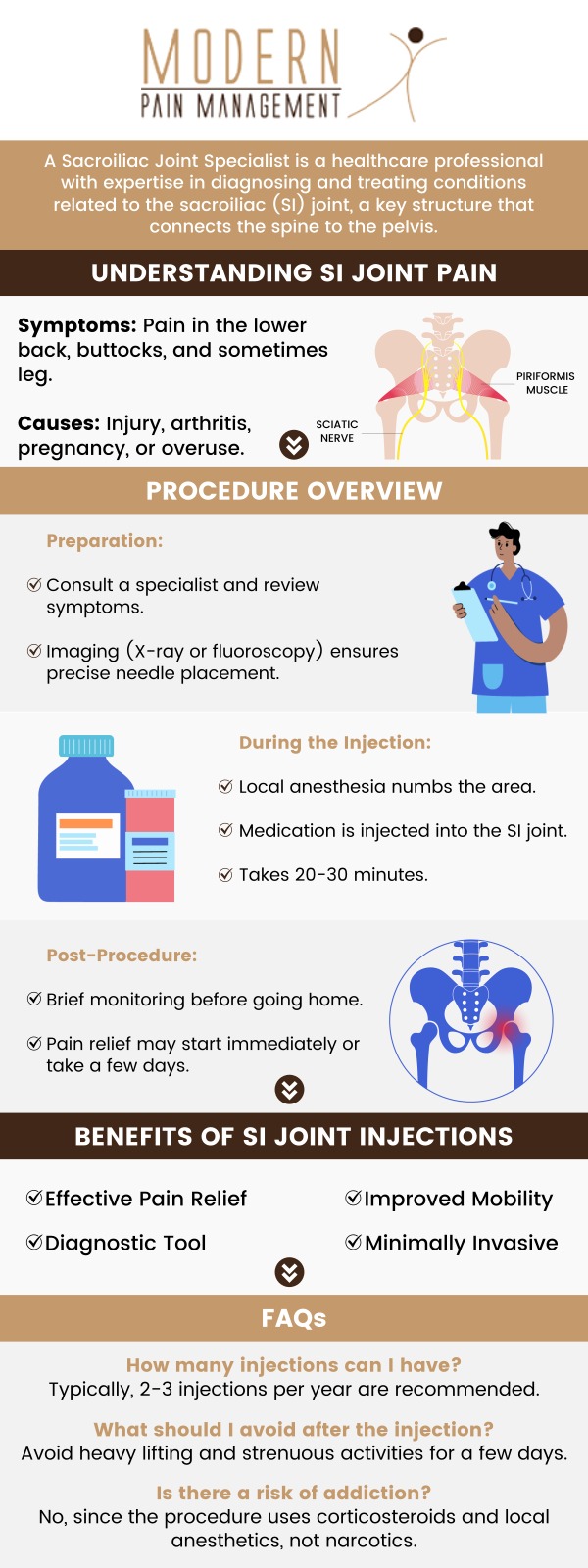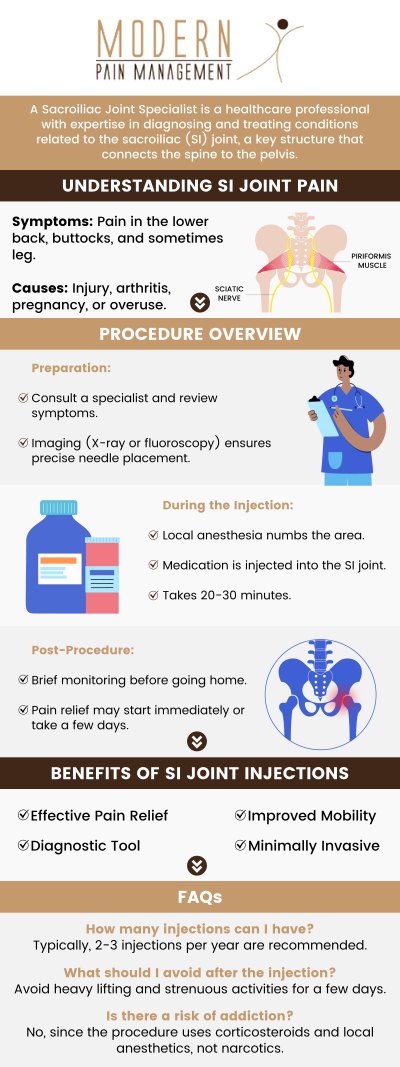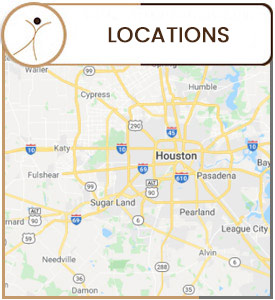Is Your SI Joint Giving You Back Pain?
SI pain begins in the lower back and buttocks and can radiate to the lower hip, groin and upper thigh, causing pain throughout the body. If you have pain in your lower back when standing up from a seated position, it could be caused by one of your Sacroiliac (SI) Joints. The severity of SI joint pain varies depending on the extent and cause of the dysfunction. Our doctors have extensive experience diagnosing and treating SI joint pain. For more information, contact us or schedule an appointment online. We have convenient locations to serve you in Houston TX and Sugar Land TX.




Table of Contents:
Can SI joint pain cause back pain?
How do I know if my back pain is sacroiliac?
What does SI back pain feel like?
What are the symptoms of an inflamed SI joint?
The SI joints connect the spine to the hips between the iliac bones and the sacrum. Walking and lifting require the two joints to provide support and stability, as well as absorb impact. Two dimples can be seen below the waist where the SI joints are located on the back.
There are different levels of sacroiliac joint pain, depending on the severity of the injury and its cause. Pain in the SI joint that occurs suddenly usually heals within a few days to a few weeks. There is chronic SI joint pain that persists for more than three months; it may be felt all the time or worsen when certain activities are performed.
Low back and buttock pain are symptoms of SI joint dysfunction. Injuries or damage to the joint between the spine and hip cause the pain. It is possible for sacroiliac pain to mimic other conditions, such as a herniated disc or hip problem. To determine the source of pain, it is important to make an accurate diagnosis. Pain medication, physical therapy, stretching exercises, and joint injections are first used to treat the symptoms. There may be a need for surgery to fuse the joint and stop the painful motion if other treatments fail to provide relief.
The symptoms of sacroiliitis can be difficult to diagnose, since they resemble those of other back conditions. Associated with inflammatory arthritis of the spine, it has been linked to a number of diseases. Symptoms of sacroiliitis include pain and swelling at the joint that connects your lower spine to your pelvis – the sacroiliac joint. You may experience pain in your buttocks or lower back, as well as pain in one or both legs as a result of sacroiliitis. Standing, climbing stairs, or other prolonged movements can worsen the pain.
It is difficult for your doctor to examine or test the motion of your joints because they are deep within your body. Joint damage is often not detected by imaging tests such as X-rays, MRIs, or CT scans. However, such scans will likely be used to attempt to reach a diagnosis, nonetheless alongside other methods. You will be asked to move and stretch in specific ways by your doctor. In this way, they will be able to pinpoint the source of your pain. You most likely have an SI joint problem if numbing drugs, such as lidocaine, cause the pain to disappear after a short period of time.
There is a range of different feelings that may be associated with SI back pain depending on its cause and severity. SI joint pain can feel sharp and stabbing, radiating from the hips and pelvis to the lower back and down to the thighs. You may feel numb or tingly, or as if your legs are about to buckle at times.
SI pain begins in the lower back and buttocks and can radiate to the lower hip, groin, and upper thigh. There can be pain on both sides of the body, even though it is usually one-sided. It is possible for patients to experience numbness, tingling, or weakness in their legs.
When you sit, stand, sleep, walk, or climb stairs, your symptoms may worsen. It is often painful to sit or sleep on the affected side of the SI joint. There are some people who have difficulty riding in cars, standing, sitting, or walking for long periods of time. The pain can be exacerbated by transitional movements (going from a seated position to a standing position), standing on one leg, or climbing stairs.
SI Joint pain symptoms vary from person to person. Dr. George Atallah, D.O. along with his team, offers various effective treatments to get relief from pain. We have convenient locations to serve you in Houston TX and Sugar Land TX. For more information, please contact us or book an appointment online. We serve patients from Houston TX, Sugar Land TX, Pearland TX, Jersey Village TX, Missouri City TX, Stafford TX, and Richmond TX.
ADDITIONAL SERVICES YOU MAY NEED




